
Viking Names
Ravensdale Park
Ravensdale Park, in the Appletree Hundred of Derbyshire, clearly derives its name from either the bird or a person with a name that corresponds to that of the bird, but its linguistic origin is difficult to pin down because of the similarities between Old Norse and Old English. The first element could be Old Norse hrafn ‘raven’, or the Old Norse male personal name Hrafn, or Old English hræfn ‘raven’, or the Old English male personal name Hræfn. The second element is either Old Norse dalr ‘valley’ or Old English dæl ‘a pit, a hollow; later a valley’. It was one of the parks of Duffield Frith hence the later affix ‘park’. In the Nottinghamshire place-name Ranskill, the first element is more likely to be Old Norse as the second element is also in that language, but the difficulty of deciding between the bird and the personal name Hrafn is the same.
Read More
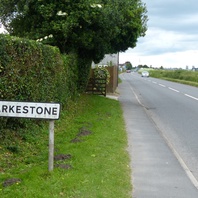
Viking Names
Swarkestone
Swarkestone, in the Repton and Gresley Hundred of Derbyshire, is derived from a Scandinavian male personal name which appears in Old Danish as Swerkir, in Old West Norse as Sorkir and in Old Swedish as Swerker. This is combined with Old English tun ‘farm, settlement’ and it is thus a hybrid name, as so many in the Trent Valley.
Read More
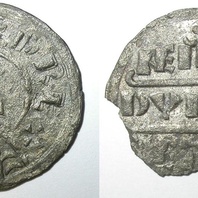
Viking Objects
Coin of Alfred the Great (1989-58/3381)
This silver penny from the mass grave at Repton was minted by a moneyer called Dudwine in Canterbury for Alfred the Great. Alfred was King of Wessex from 871 to 899 and spent most of his reign fighting off Viking invasions. He won a decisive victory at the Battle of Edington in 878 which resulted in a peace with the Vikings and the creation of the Danelaw. Minting coins was a way of controlling the means of exchange within a kingdom and which created a more easily administered standardized system of trade. Moreover, the coins themselves were often used as propaganda, portaying symbols and statements that gave off a desired message. The Vikings later used the minting of coins to legitimize their own rule.
Read More
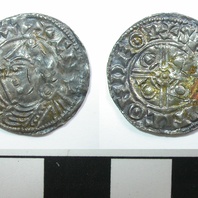
Viking Objects
Silver Penny (1960/459-2)
This silver penny was minted in Derby for King Cnut the Great, the Danish king who reigned over England from 1016-1035. It is not known precisely where it was found. Minting coins was a way of controlling the means of exchange within a kingdom and which created a more easily administered standardized system of trade. Moreover, the coins themselves were often used as propaganda, portaying symbols and statements that gave off a desired message. The Vikings later used the minting of coins to legitimize their own rule.
Read More
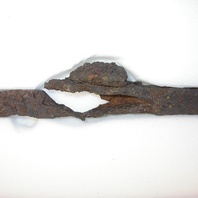
Viking Objects
Sword Fitting (1985/225-13)
This is the lower guard of a sword that may have been a Petersen Type H sword with triangular pommel. This style of sword is the most common type found in Norway and accounts for approximately 25% of those found in Ireland. It was found about 760mm from an iron sword blade in Mound 7, along with iron nails and a fragment of a possible iron spur.
Read More
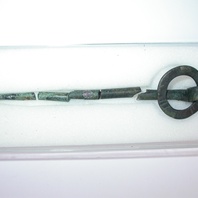
Viking Objects
Ring-headed Pin (2004-311-sf245)
This ring-headed pin was uncovered in a cremation burial which was generally unfurnished and containing little evidence. This type of pin was fairly common throughout the Viking Age and was used to hold a cloak around one’s body.
Read More
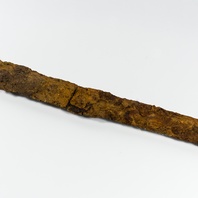
Viking Objects
Sword (1989-59/7113)
This Viking Age sword was found in Grave 511 at Repton where the invading Viking Great Army had their winter camp in 873/4. When it was found, the sword had traces of a wooden scabbard attached to the rusted blade. Analysis showed that the scabbard was lined with fleece and covered in leather. The grip was wooden and covered in a woollen textile.
Read More
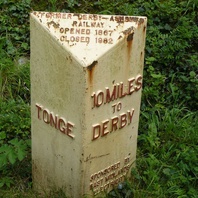
Viking Names
Derby
Derby, in the Morleyston and Litchurch Hundred of Derbyshire, is the only one of the Five Boroughs of the Danelaw to bear a Scandinavian name. It is also one of the few instances of a Scandinavian-named place for which we have an earlier English name. The English name is Norðworðig from the Old English elements norð ‘north’ and worðig ‘enclosure’. This is possibly related to Derby’s position, slightly north-east of Tamworth and that the enclosure’s northernness is relative to the ancient capital of Mercia. In standard reference books the name Derby is explained as Djúrabý, comprising Old Norse djúr ‘deer’ and by ‘farm, settlement’. Furthermore the compound recurs in the British Isles, and probably refers to a particular function – djúrabý ‘specialised production units that had earlier formed parts of multiple estates’. However, the first element of the name probably has a completely different derivation based on its location on the River Derwent, whose name is pre-English in origin. The form of the river-name in the Anglo-Saxon period was Deorwente. Scandinavian settlers hearing this river-name could have associated the first element deor with the familiar compound djúrabý, or indirectly adapted the Romano-British settlement name Derventio. It is certainly possible that the Romano-British name continued in use to refer to the fortified area in the Anglo-Saxon period. Mint-signatures from Derby point to the likelihood not only that Deoraby originally referred specifically to the area of the Roman fort, but also that it is a Scandinavianisation of a pre-existing name of British origin used by the Anglo-Saxons.
Read More

Viking Names
Bretby
The first element of Bretby, in the Repton and Gresley Hundred of Derbyshire, comes from either the Old Norse ethnonym Bretar ‘Britons’ or its Old English cognate, Brettas. The second element of the place-name is Old Norse bý ‘a farmstead, a village’. Traditionally, the place-name has been interpreted as referring to Britons who accompanied the Scandinavians in their settlements. However, the exact implications of such a name are not yet fully understood and are the subject of ongoing work by Dr Jayne Carroll of the Institute for Name-Studies, University of Nottingham.
Read More
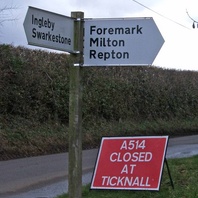
Viking Names
Ingleby
Ingleby, in the Repton and Gresley Hundred of Derbyshire, takes its name from the Old English ethnonym Engle ‘the Angles, later the English’ and Old Norse by ‘a farmstead, a village’. There is also an Ingleby in Lincolnshire (historically Yorkshire). This Ingleby is close to the Viking winter camp at Repton, and the site of a unique Viking Age cremation cemetery. The exact implications of such a name are not yet fully understood and are the subject of ongoing work by Dr Jayne Carroll of the Institute for Name-Studies, University of Nottingham.
Read More
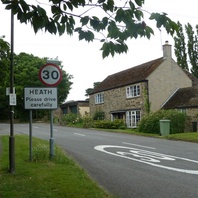
Viking Names
Heath
The eatlier name for Heath, in the Scarsdale Hundred of Derbyshire, was Lund from Old Norse lundr ‘grove, small grove’. Heath from Old English hǣð ‘heather; a tract of uncultivated land’ replaced the older name which remains only as a field name.
